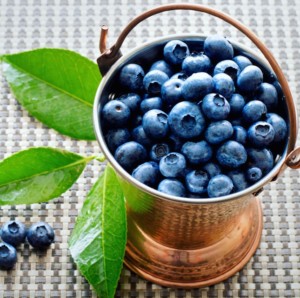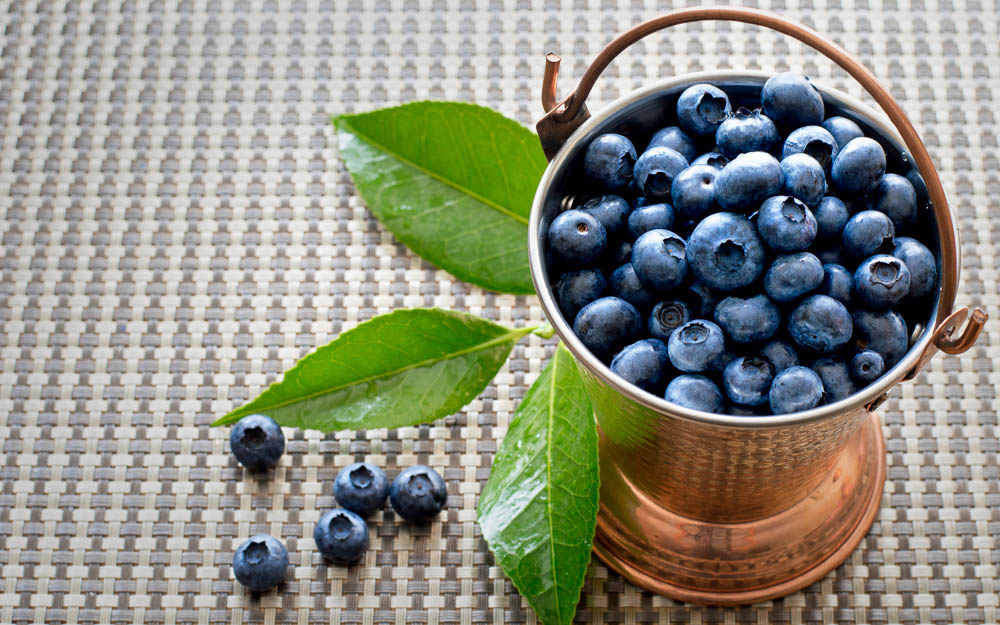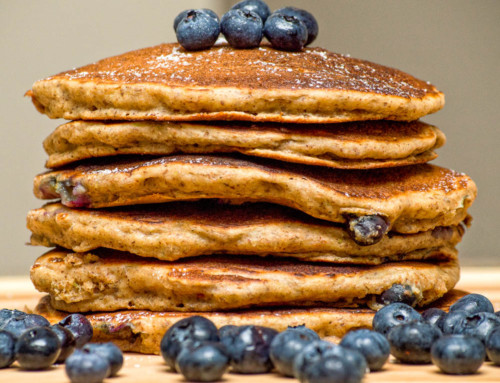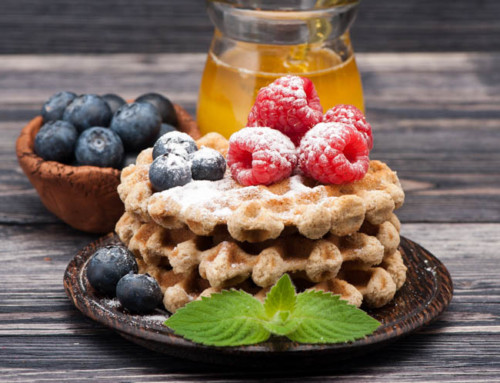When it comes to desirable properties of superfoods, antioxidant content is at the top of the list. As the name suggests, antioxidants are an opposing balance towards molecules that undergo oxidation. So, before we discuss antioxidant properties, lets first take a look at the oxidants themselves to get a better picture of what happens inside our bodies regarding these molecules.
By understanding the process and areas of concern, we then can look at some nutritional solutions, and for the purpose of this article — the antioxidant content within blueberries along with other fruits.
What is Oxidation, Oxidants and Free Radicals?
Oxidation is a normal occurring process within our bodies. When oxygen is metabolized (Krebs cycle — macronutrients and oxygen are used to generate ATP), free radicals are created in the process. Free radicals are molecules capable of independent existence and contain an unpaired electron — a charge. The charge makes these free radicals unstable and therefore highly reactive, by engaging and taking an electron from a stable molecule, thus braking it in the process. Examples of free radicals include: OH*, O2*, NO*, NO2*, ROO* and LOO*. Often such free radicals will attack important macromolecules — lipids, protein and nucleic acids (DNA ) — to steal an electron leading to cell damage and homeostatic disruption. Some damage by free radicals is considered “normal” changes with age are relatively common to all. Along with free radicals, other non-radical reactive derivatives called oxidants are also a health concern. Oxidants can easily lead to free radical reactions in living organisms. These oxidants include: H2O2, O3, O2, HOCl, HNO2, ONOO-, N2O3 and LOOH.
In addition to our body producing oxidants, we can acquire them from the environment as well as many take-out foods. Take-out foods, specifically deep fried and fatty foods, such as: fries, burgers, pizza, pastries, ice-creams, chocolate bars, along with alcohol are deprived of quality nutrients and contain oxidants. Other environmental sources include smoking, radiation, UV light, strong sunlight, domestic chemicals like pesticide and air-fresheners, industrial and vehicular pollutants and certain drugs also increase oxidant levels within our bodies. The risk of acquired oxidants from food and environment turning into free radicals once inside our bodies is high.
A Balancing Act
Free radicals play a duel role as both toxic and beneficial compounds. At low or moderate levels, they exert beneficial effects on cellular responses and immune function. Hence, the body produces them and has an effective way of dealing with them. At high concentrations, they generate oxidative stress, a deleterious process that can damage all cell structures. Oxidative stress plays a major part in the development of cancer, arthritis, aging, autoimmune disorders, cardiovascular and neurodegenerative diseases. As mentioned above, the human body is capable and does naturally deal with generated free radicals effectively. However, when the critical balance between free radicals and defense (antioxidants) is unfavourable — oxidative damage occurs.
What are Antioxidants?
An antioxidant is a molecule stable enough to donate an electron to a free radical and neutralize it — making it stable and reducing its damaging capacity. This is done mainly by antioxidant free radical scavenging property. Along with being radical scavengers, antioxidants act as hydrogen donors, electron donor, peroxide decomposer, singlet oxygen quencher, enzyme inhibitor, synergist, and metal-chelating agents. There are several types of antioxidants and new ones are likely to be identified. Their roles range from suppression of free radical formation, to repairing the damage caused by such molecules.
The human body is capable of and does naturally produce antioxidants — glutathione, ubiquinol, and uric acid are examples. Other antioxidants are obtained from the diet, include but not limited to:
Vitamins: E, C, and B-carotene.
Minerals: selenium
Essential Fatty Acids: Omega 3 and 6
Flavonoids: polyphenolic compounds found in most plants, over 4000 chemical structures exist. Every plant contains a unique combination of flavonoids and has different effects on the body.
Antioxidants and Diet
There are several reports showing antioxidant potential of all food types. In reference to fruits, strong antioxidant activities have been found in berries, cherries, citrus, prunes, and olives. Green and black teas are also on top of the list of foods for their antioxidant properties as they contain up to 30% of the dry weight as phenolic compounds (article coming soon — subscribe). There are also many Indian medicinal plants that provide antioxidants including: ginger, garlic, fenugreek, onion, turmeric, cinnamon, cardamom. Antioxidants in food is an ongoing research endeavour studied as a preventative measures and/or treatments against numerous oxidative stress diseases.
What makes Blueberries a Superfood?
Now that we are familiar with the basics of antioxidants lets explore the magical power of blueberries. Fruit berries in general have been well studied as they contain the best dietary sources of bioactive compounds — antioxidants. Most berries like strawberry, raspberry, blackberry, blueberry and cranberry contain high levels of antioxidant properties. In recent years, blueberries have climbed to the top of the list because they contain more antioxidant properties so, let’s compare the numbers.
The Data
ORAC test – 2007 USDA agricultural research services tested 277 selected foods (in vitro — in a test tube) for their antioxidant values using the oxygen radical absorbance capacity (ORAC) test. Their conclusions state, different test do provide varying values, as well as different sample of food. Nevertheless, here’s some of their findings for oxidative capacity values — how efficient foods are as antioxidants by measuring their inhibition of peroxy-radical-induced (free radical) oxidation:
1/2 cup Strawberry valued at 2969 umol, 1/2 cup Blueberry at 4848 umol, and 1 small Apples at 6370 umol. Based on these data results, the most antioxidant capacity per serving was found in apples, around 1.5x more than blueberries.
FRAP test – another poplar test for antioxidant content measure is ferric ion reducing antioxidant power (FRAP) test. Under this test the antioxidant capacity per serving for strawberries (3.584 mmol/serving) were ahead of blueberries (2.688 mmol/serving) by approximately 1.5x; and apples (0.739 mmol/seving) did not even make the top 20 list of foods with high antioxidant capacity. This test shows, apple juice (1.779 mmol/seving) had more antioxidant content than a whole apple. As a side note, the two tests measurements are in different units but, we are not comparing numbers between the tests. We’re simply trying to share the difference between our food choices within stated test results.
The Application
To make things even more interesting, it is noted that alcohol is a sources of introduction of external oxidants into our body; but red wine is on the list of 50 foods with the highest antioxidant properties. Red wine (2.135 mmol/100g) beats cherries, plums and even spinach (1.226 mmol/100g) for it’s antioxidant content. Even with these results, replacing a glass of green spinach smoothie for a glass of red wine is not a good idea; although most of us would be tempted to.
 The take away message is not to give up on blueberries and substitute apples; or choosing apple juice over a whole fruit. The available data should serve each consumer in making informative decisions towards food selections. Another caveat of scientific data is that it is often manipulated by business and media enterprises for product promotability. Scientific experiments are precise, trying to investigate and answer a specific question. In the case of FRAP test study, it was to simply generate a ranked food table to test a specific hypothesis. In their paper, Halvorsen et al. stated, “These antioxidants may have very different absorption properties in humans and their transport to, and within, tissues is likely to vary. The antioxidant food table can therefore not be used for dietary recommendations at the present stage.” However, such clear statement within the research paper rarely stops food companies from using this data to promote their blueberry supplements and apple juice as a nutrient equal to real fruit.
The take away message is not to give up on blueberries and substitute apples; or choosing apple juice over a whole fruit. The available data should serve each consumer in making informative decisions towards food selections. Another caveat of scientific data is that it is often manipulated by business and media enterprises for product promotability. Scientific experiments are precise, trying to investigate and answer a specific question. In the case of FRAP test study, it was to simply generate a ranked food table to test a specific hypothesis. In their paper, Halvorsen et al. stated, “These antioxidants may have very different absorption properties in humans and their transport to, and within, tissues is likely to vary. The antioxidant food table can therefore not be used for dietary recommendations at the present stage.” However, such clear statement within the research paper rarely stops food companies from using this data to promote their blueberry supplements and apple juice as a nutrient equal to real fruit.
Farm location and its methods, travel distance, storage and preservatives are just some of the factors that may affect antioxidant levels in food. Out of season blueberries, grown under controlled conditions and shipped great distances will not be a healthier option when compared to locally grown, in season apples. We often feel entrapped by marketing strategies of the food companies selling new and popular products. Fads regarding newest and greatest superfoods excite our emotional response to buy. This has raised the demand and production of certain produce. For example, in the last few decades commercial blueberry production has significantly increased — from only 10 countries in 1990 to 27 countries by 2011. Michalska et. al. note in their research paper, that a severe problem exists with the overproduction and unequal distribution of blueberry products throughout the world. Enterprises in blueberry business require an effective strategy to sell their product. A successful approach is to market such overproduced produce as a superfood — thus, simultaneously increasing its demand and price. This being said, blueberries along with other berries are still a very good food product that has been proven to contain antioxidant properties, along with other health benefits of whole foods.
Final Thoughts
Food has been used as medicine since historical times. Today, the modern world is going back to our ancient roots and using food as medicine once again. Today, we are more tech savvy and can test almost anything to bits. So, the phenomenon of antioxidants is emerging and for the right reasons. However, to solely base your dietary decision on a test that indicates a number made up in a test tube is not wise.
The ORAC database for selected foods is no longer available on the USDA’s website, it was removed in 2012, stating ”…due to mounting evidence that the values indicating antioxidant capacity have no relevance to the effects of specific bioactive compounds, including polyphenols on human health.” Furthermore, USDA acknowledges that the derived values are routinely misused by food and dietary supplement manufacturing companies to promote their products.
Final word, blueberries are an excellent food product to be consumed on a regular basis as your diet allows. However, do not limit yourself to only few food group choices, when in season, available locally grown options are just as good and sometimes better while often being cost effective. For such reasons and with the shift of the seasons, in the summer enjoy berries, autumn is a perfect time for apples, and introduce oranges into your diet this winter season.
If you enjoyed this article please share it with your friends and be sure to check out our The No-Diet Book.
References:
Websites:
https://www.ars.usda.gov/news-events/news/research-news/2007/data-on-food-antioxidants-aid-research/
https://www.ars.usda.gov/ARSUserFiles/80400525/Articles/AICR07_ORAC.pdf
https://www.ars.usda.gov/northeast-area/beltsville-md/beltsville-human-nutrition-research-center/nutrient-data-laboratory/docs/oxygen-radical-absorbance-capacity-orac-of-selected-foods-release-2-2010/
Articles:
Bhagwat et. al. USDA Database for the Oxygen Radical Absorbance Capacity (ORAC) of selected Foods. USDA Beltsville Human Nutrition Research Center. 2007.
Halvorsen et al. Content of redox-active compounds (ie, antioxidants) in foods consumed in the United States. Am J Clin Nutr. 2006. 84:95-135.
Michalska et al. Bioactive Compounds of Blueberries: Post-Harvest Factors Influencing the Nutritional Value of Products. Int. J. Mol. Sci. 2015.
Pham-Huy et al. Free Radicals, Antioxidants in Disease and Health. Int. J. Biomed. Sci. 2008. 4(2).
Wu et al. Lipophilic and Hydrophilic Antioxidant Capacities of Common Foods in the United States. J. Agric. Food Chem. 2004. 52:4026-4037






